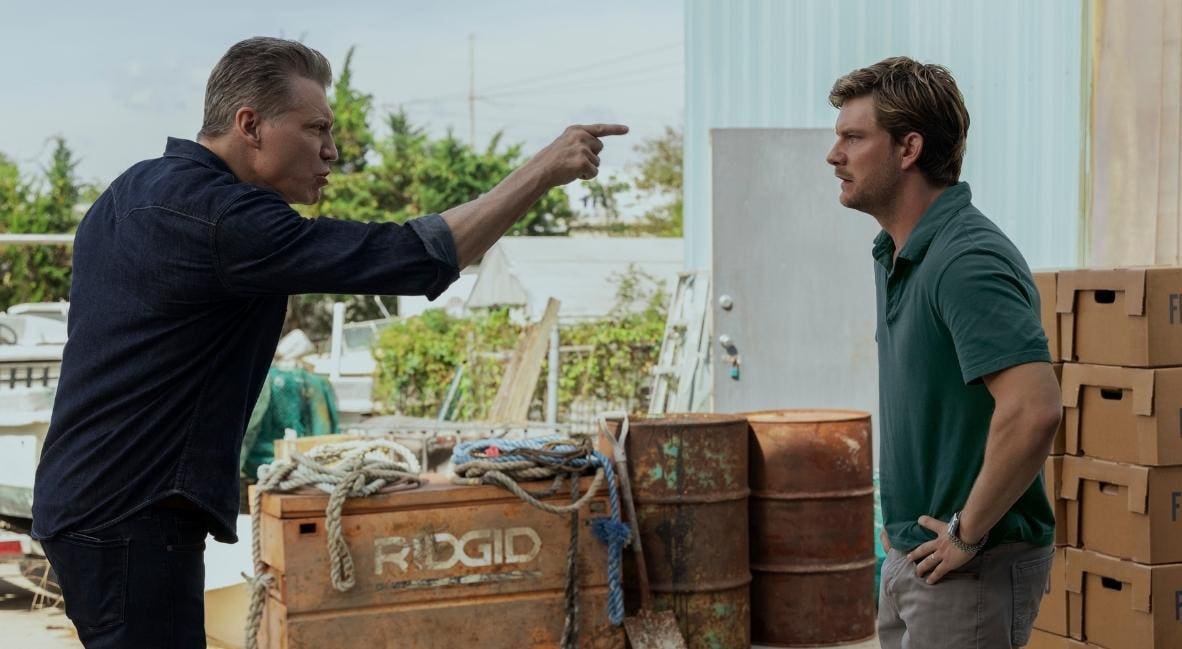Leader, an 8-year-old Rottweiler, is the USO’s Canine Volunteer of the Year.
Courtesy of USO
The USO’s reigning Canine Volunteer of the Year is a loving therapy dog of a breed that sometimes surprises people: Rottweiler.
Leader, an 8-year-old Rottie, has a special love for children, and enjoys visiting with military families at Fort Eustis, an Army base in Newport News, Virginia. Her handler, Army veteran Renice Zimmerman, is often “humbled” watching her dog comfort a child who just lost a parent, or when she makes a beeline to an agitated soldier who soon relaxes while petting the pooch.
“She just has this knack and sense of being able to pick out who she thinks needs her,” she said.
Zimmerman and Leader have volunteered for over 130 hours with the USO’s Canine Program since its inception in August of 2023, often attending deployment and homecoming ceremonies. Leader delights in offering up her belly for rubs or kissing the faces of new friends.
Leader and fellow therapy dog Kayda visit with soldiers at Fort Eustis in Newport News, Virginia.
Courtesy of Renice Zimmerman
Still, Zimmerman often hears people express surprise to see a Rottweiler working as a therapy dog and remark, “I didn’t know a dog like this could be a therapy dog.” So she’s proud that her dog can be an ambassador for the breed.
“One of the ways that we really contribute to our breed is showing the positive aspects of the Rottweiler and living by, ‘There’s no bad dogs — there’s bad owners,’” she said. “All dogs are like children: the majority are born with a blank slate, and it’s what we make of them.”
It’s a complete turnaround for Zimmerman, who once feared Rottweilers after watching “The Omen,” a horror film that features a Rottweiler as a devilish dog. She was a “horse person” who had served four years in the Army when she married her husband, Colonel Douglas Kent Zimmerman II.
“I thought that we’d have a golden retriever or Lab or a little corgi or something, but he’s like, ‘No, we’re having Rottweiler,’” she recalled. “Doug was a big six-foot-six man, West Point grad, fabulous physical shape. I’m five two, so there’s a big difference in what he could handle and what I could handle.”
Renice and Doug Zimmerman smile with their first Rottweilers, Xilly and Ingo, in 1983.
Courtesy of Renice Zimmerman
Despite her reservations, the couple got their first Rottweiler in 1983 while her husband had a command in Germany. She soon came to love their Rottweilers — and the positive impact they had on the soldiers made an indelible impression.
“His troops used to love to play with the dogs. He would take one of the Rottweilers actually out to the field with him on maneuvers,” she said. “Then we would take them to the barracks sometimes and I could see what a difference it made.”
The Rottweiler Legacy
When Col. Zimmerman died in 2006 while serving in the Army, his wife found solace in their dogs.
“When I lost my husband back in 2006, the dogs made a tremendous impact on me just being able to move forward,” she said.
She realized her dogs could also help others move forward when she learned about therapy dogs at a national seminar hosted by T.A.P.S., a nonprofit that supports people grieving the death of a loved one in the military community. She started volunteering as a therapy dog handler for T.A.P.S., which she still does today.
“I’ll tell you, there’s no experience like it in the world when there’s a child who lost a military parent and have not really opened up about it. And you’re sitting there with them and your dog and they whisper in that dog’s ear that ‘My daddy’s not coming home anymore,’” she said. “And you relay that to the parent or grandparent who is there with the child and they’ll say, ‘That’s the first time that they’ve spoken about it.’ And that’s the first step to that child’s healing.”
A child pets Leader’s belly.
Courtesy of Renice Zimmerman
Now Zimmerman, a nurse with Semper Fi & America’s Fund who works with combat wounded from all military branches, loves volunteering with Leader for a variety of organizations, including T.A.P.S., the USO (United Service Organizations), Crisis Response Canines, Red Cross and Mutts with a Mission.
She’s proud that her smart dog is so active as a therapy dog and is even a retired Grand Champion show dog after starting life as a challenging puppy. Zimmerman bred Leader and initially thought she’d keep a different puppy from her litter, but decided to keep and train Leader herself so the opinionated dog wouldn’t “become a statistic.”
Zimmerman showered Leader with love and took her to obedience classes, offered rewards like liver or chicken during positive training sessions, and made sure to socialize her by having as many different people as possible pet her.
“And look at her now,” she said of the USO’s Canine Volunteer of the Year.
Leader kisses Renice Zimmerman during the Virginia Run for the Fallen near her late husband’s marker.
Courtesy of Renice Zimmerman
The USO’s Canine Program
Leader is one of over 110 therapy dogs in the USO’s Canine Program, according to Lindsey Fischetti, USO senior programs director. Some handlers, like Zimmerman, are military veterans or part of a military family, while others are civilians who “have a love for supporting our military.”
“This program wouldn’t exist without volunteers like Renice and Leader,” she said. “These dogs put in years of training to get to where they are — to be therapy dogs. The immense impact they make on the military community and their dedication to putting a smile on our service members’ and their families’ faces is admirable. We are just incredibly grateful to her and all the other volunteers around the world.”
Renice Zimmerman and Leader have volunteered for over 130 hours with the USO.
Courtesy of USO
Service members often meet therapy dogs at USO Centers and say things like, “It feels like home” to spend time with a dog, she said. She’s also seen dogs help bolster the confidence of children in miliary families who have just had to move and are scared to start over in a new city and a new school.
Fischetti said the USO offers a way to say thank you to service members and their families, and programs like the USO Canine Program help soften the transition to a new location and build community more quickly.
“The military serves us. At the end of the day, they protect us and take care of us,” she said. “One thing we forget is that their families sacrifice so much alongside them. They move constantly. So programs like this make a big difference in their day-to-day lives, because having to uproot, find new friends and build a new infrastructure for your life is a really big deal.”
Potential volunteers can head to their local USO Center or visit www.uso.org/programs/uso-canine-program for more information or to sign up, Fischetti noted.
“We would love more canine volunteers,” she said. “They’re in over 113 locations now, but we have over 250 locations, so there’s lots of room for growth.”
Leader loves meeting new friends, an important quality for therapy dogs.
Courtesy of Renice Zimmerman
Leader Of The Pack
For her part, Leader not only loves her job as a therapy dog, but “she lives for it,” according to Zimmerman. She seems to share Zimmerman’s love of the military. A couple of times, Leader has become so excited seeing troops calling cadence in formation that, with permission, Zimmerman has let her dog off leash to join them.
“She would just run up in the center of that formation as they were marching and be coming up with them,” she said with a laugh.
During the holidays, Leader pulls a cart filled with candy and gifts to give to staff, patients and families at the Naval hospital in Portsmouth, Virginia, to spread cheer. It’s rewarding to Zimmerman, who believes her late husband would approve of all the volunteering she does with Rottweilers like Leader to support the military community.
“I really think that he’s smiling down on it because I did the Rottweiler scene for him,” she said. “I love our military. I totally understand the sacrifices they make, and I’ll do anything I can to give back.”









